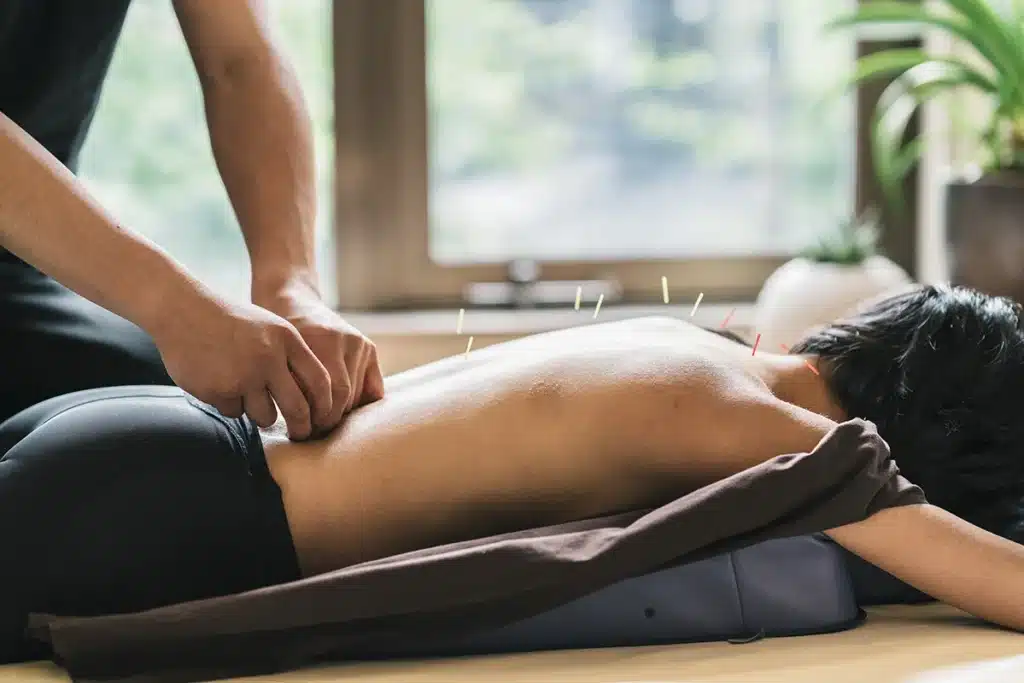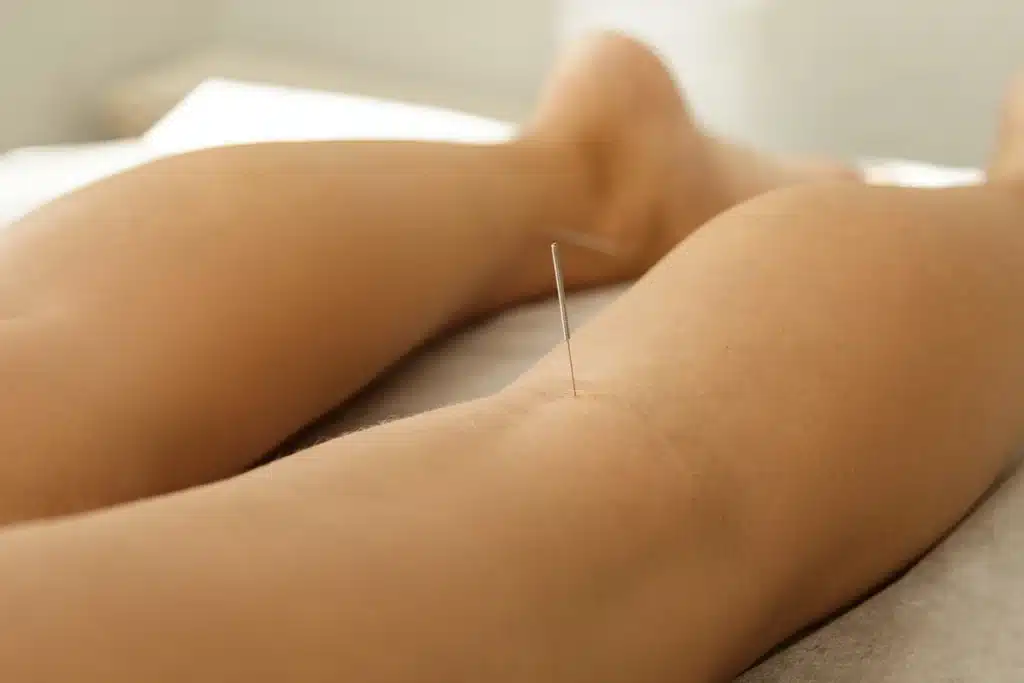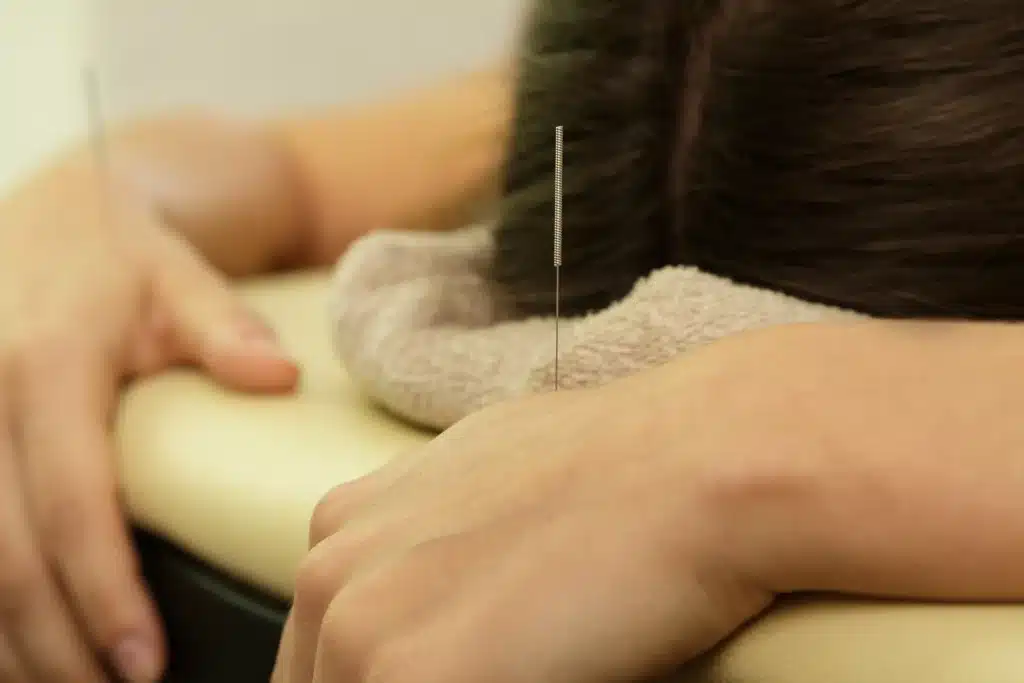
Table of Contents
ToggleImagine a world where the pain and tension you feel in your muscles could be eased with the strategic placement of tiny needles.
This is not a dream. This is the reality of treating acupuncture trigger points.
In this Long Island Neuroscience Specialists guide, we’ll delve deep into the intricate world of trigger points and the healing link that binds them with acupuncture.
Trigger Points are small, localized muscle cramps that manifest as tight and painful nodules within the muscle fibers. These knots are not just mere discomforts; they are the epicenters of pain, sending agonizing signals throughout the body.
Furthermore, they act like roadblocks, restricting the regular range of motion and limiting fluid movement, thereby hindering mobility.
Over time, if untreated, these trigger points can lead to chronic pain conditions, complicating everyday activities and diminishing the quality of life.
The realm of trigger points is often shrouded in misconceptions and myths. One of the most prevalent misconceptions is the equivalence of trigger points, often colloquially termed “knots”, to acupuncture points. However, this belief is oversimplified and doesn’t capture the intricacies of either.
In traditional Chinese medicine, acupuncture points are specific locations on the body’s meridians, believed to be energy pathways. Stimulating these points is thought to correct imbalances in the flow of energy, promoting healing and wellness.
Trigger points, on the other hand, are physical manifestations of muscle stress or injury, with no direct correlation to energy flow. While there might be some overlap, implying that they are one and the same does a disservice to both concepts.
Understanding the clear distinction between these two is pivotal. Only when we unweave the complex tapestry of acupuncture trigger points can we truly appreciate the depth of its healing potential and tailor treatments effectively.
Venturing into the realm of trigger points and acupuncture points is like navigating a vast labyrinth, intricate and layered. While there is a degree of intersection, it’s crucial to note that they aren’t mirror images of each other.
Acupuncture, a traditional Chinese medical practice, harnesses the body’s meridians—perceived energy channels. By stimulating specific points along these meridians, acupuncture seeks to restore balance and facilitate healing.
Among the myriad points that acupuncture addresses, there exist trigger points and the lesser-known “ashi” points. The latter refers to the discernible, often tender, nodules that one might feel under the skin.
However, while acupuncture points are pre-defined locations with specific therapeutic indications, trigger points are spontaneous and arise due to muscle stress, strain, or injury. Their existence isn’t predefined by meridians but by physical distress in the muscles.
The short and resounding answer is yes. Acupuncture stands as a beacon of hope for those tormented by the persistent pain and discomfort of trigger points. By accurately targeting these points, acupuncture facilitates the release of muscle tension and promotes relaxation.
Beyond the anecdotal affirmations, a growing body of scientific research underscores the efficacy of acupuncture in treating trigger points. The results often transcend mere pain alleviation.
Many individuals report enhanced energy, improved mood, and an overall sense of well-being post-treatment. Thus, acupuncture doesn’t just target the symptom—it addresses the holistic health of the individual.

Imagine a ball of twine under tension, bound and constrained. When you finally give it some leeway, it gracefully expands, loosening up. This scenario aptly captures the sensation that unfolds when a trigger point is released.
These points, often seen as muscle constriction sites, when released, provide both immediate and profound relief. The taut muscle fibers that were previously knotted begin to relax, making way for enhanced blood flow.
This revitalized circulation not only alleviates pain but also rejuvenates the muscle, restoring it to its natural, functional state. Addressing acupuncture trigger points ensures that the muscle’s full range of motion is reclaimed, enhancing overall mobility.
In the vast landscape of therapeutic interventions, acupuncture shines the brightest when it comes to treating trigger points. Its efficacy is unparalleled.
While massages, stretches, and heat therapy have their merits, acupuncture’s ability to precisely target and release tension from acupuncture trigger points is unmatched.
By strategically placing needles at specific points, acupuncture taps into the core of the pain, providing swift and targeted relief. It’s a method refined through centuries, tailored to ensure maximum benefit in the minimum time.
Located deep within the abdomen and running through the hip, the psoas muscle is integral for various core movements and postures.
Given its pivotal role and location, it’s no surprise that it often harbors trigger points. These points, when left untreated, can manifest as lower back pain, hip discomfort, and even postural abnormalities.
However, by employing acupuncture on these trigger points, a targeted release is achieved. The muscle fibers of the psoas unwind and relax, paving the path for healing and relief. This highlights the transformative power of addressing acupuncture trigger points, especially in critical muscles like the psoas.

It’s a question that often arises when discussing the mechanisms behind pain relief and muscle relaxation. Many individuals, including some practitioners, believe that as you apply pressure to a trigger point, either through massage or needling, accumulated toxins in the muscle fibers are released.
But what are these “toxins”? Typically, proponents of this theory refer to metabolic waste products that accumulate in muscle tissue due to various factors, including inflammation, injury, or poor circulation.
While the idea is attractive and seems logical, especially when considering the immediate relief often felt after a session addressing acupuncture trigger points, it’s crucial to approach such claims with a healthy dose of scientific skepticism.
As of now, concrete evidence to substantiate this theory is sparse. Ongoing research is crucial to draw definitive conclusions. For now, it’s safe to say that the relief from trigger point therapy comes primarily from the mechanical release of muscle tension and not necessarily the expulsion of toxins.
Absolutely! When it comes to managing muscle tension, acupuncture has proven to be a powerful tool. Knots, or more technically, trigger points, are essentially muscle fibers in a state of persistent contraction.
By targeting these acupuncture trigger points, the age-old practice of acupuncture can effectively signal these stubborn knots to relax. The precision with which acupuncture needles are inserted ensures that the exact site of tension is addressed, promoting relaxation and alleviating associated pain.
So, whether you’re looking at it from a traditional Eastern medicinal perspective or a modern physiological viewpoint, the efficacy of acupuncture in addressing trigger points is undeniable.
It stands as a testament to how ancient practices can seamlessly meld with modern understanding, delivering profound relief to countless individuals.
The efficacy of treatments targeting acupuncture trigger points significantly hinges on the practitioner’s expertise and training.
Both dry needling and acupuncture aim to alleviate pain from these points, yet there’s a marked difference in the depth of knowledge between the two practitioners.
Licensed acupuncturists undergo rigorous training, ensuring comprehensive understanding and skillful application.
Conversely, some dry needling practitioners may only have a rudimentary grasp, obtained from brief courses.
In essence, the profoundness of relief and safety largely depends on the hands that wield the needle, making the choice of practitioner paramount.
Safety is of paramount importance when addressing acupuncture trigger points, a philosophy ardently upheld by Long Island Neuroscience Specialists.
Dry needling, especially when executed by those with minimal training, is surrounded by apprehension and potential hazards. On the flip side, acupuncture, with its ancient roots, stands as a beacon of reliability and efficacy.
Administered by licensed professionals, such as those at Long Island Neuroscience Specialists, it promises patients the highest standards of care.
These professionals undergo rigorous training, ensuring that each needle insertion is both precise and safe. For those on a quest for pain relief and wellness, prioritizing safety is essential.

Navigating the intricate labyrinth of muscle pain and tension necessitates an understanding of trigger points.
As we’ve unveiled, acupuncture trigger points therapy is a shining beacon for many, promising relief and rejuvenation. The undeniable link between acupuncture and trigger points heralds acupuncture as an indispensable asset for holistic well-being.
Embark on a transformative journey with acupuncture and wave goodbye to the anguish of trigger points. Place your trust in certified professionals!
GET IN TOUCH +
285 Sills Road
Building 5-6, Suite E
East Patchogue, NY 11772
(631) 475-5511
184 N. Belle Mead Road
East Setauket, NY 11733
(631) 675-6226
GET IN TOUCH +
285 Sills Road
Building 5-6, Suite E
East Patchogue, NY 11772
(631) 475-5511
184 N. Belle Mead Road
East Setauket, NY 11733
(631) 675-6226
SUBSCRIBE TO OUR NEWSLETTER +
Send us a Google review. Click this link and let us know how we did!
Review us on Yelp too.